The wreck of the Royal Australian Air Force plane Baltimore FW282 was found in the Aegean Sea near the island of Antikythera more than 80 years after it went down, leaving three of its four crewmen dead.
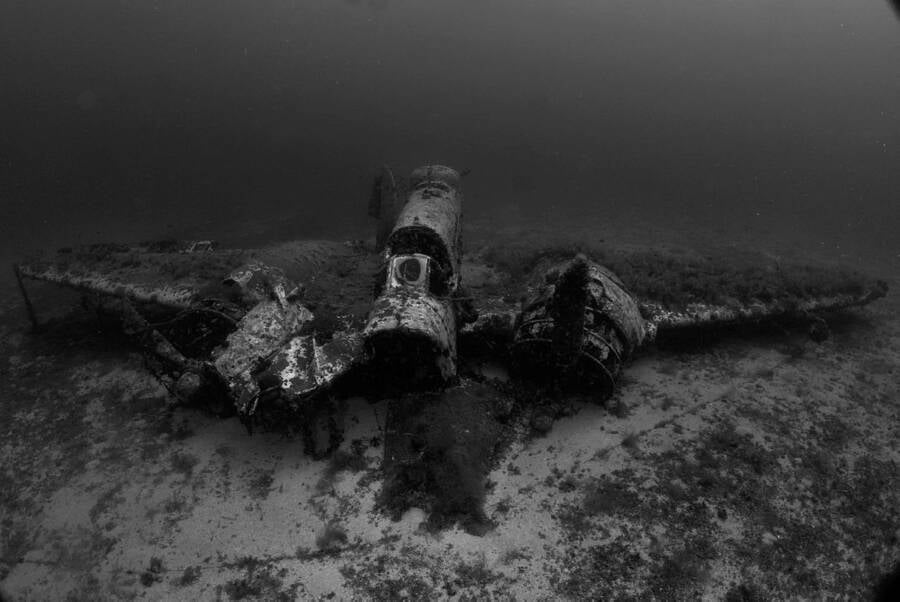
AegeanTec/Australian Department of DefenseThe wreck of the Baltimore FW282, which was found at the bottom of the Aegean Sea near the Greek island of Antikythera.
In 1943, a Royal Australian Air Force (RAAF) bomber was flying near Greece when it was intercepted by a German fighter plane. The RAAF plane was eventually shot down, and only one man managed to narrowly escape the crash with his life. The fate of his fellow soldiers and their plane had long been an open question — until now.
More than 80 years after the RAAF plane was shot down by the Nazis, it’s been recovered off the island of Antikythera in Greece. Now, this discovery brings a measure of relief and closure to the families of the fallen soldiers, and finally offers a resolution to a longstanding World War II mystery.
Discovering This Australian World War II Bomber Near Greece
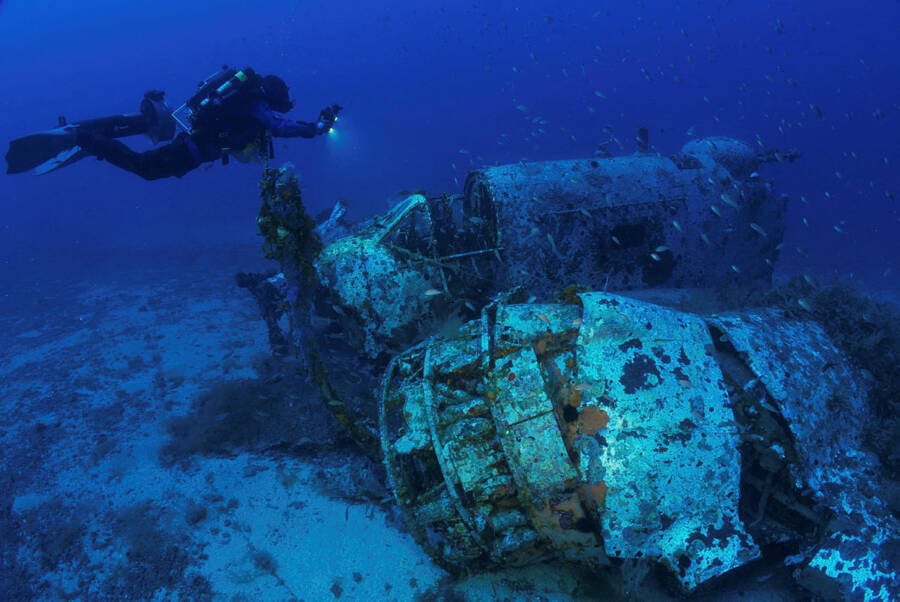
AegeanTec/Australian Department of DefenseA diver with the wreck of the RAAF plane, which was discovered by AegeanTec in 2024.
According to the Australian Department of Defence, the wreck of the Baltimore FW282 bomber was discovered in 2024 by the Greek technical diving group AegeanTec. Divers located the wreck at a depth of some 200 feet, near the Greek island of Antikythera (famous for the ancient device known as the Antikythera mechanism). Believing it to be an RAAF plane, they contacted the RAAF’s History and Heritage branch.
The RAAF was then able to confirm that the sunken craft was indeed was an RAAF plane, specifically the Baltimore FW282, a bomber that had been shot down in 1943. Four men were on the plane at the time: the pilot, William Alroy Hugh Horsley of the RAAF, the navigator, Leslie Norman Row of the British Royal Air Force, and two Wireless Operator/Air Gunners, Colin William Walker of the RAAF, and John Gartside of the Royal New Zealand Air Force.
Of the four men, only Horsley survived.
“This aircraft discovery is significant,” Chief of Air Force, Air Marshal Stephen Chappell, remarked in the RAAF press release, “and offers the chance to provide closure to families.”
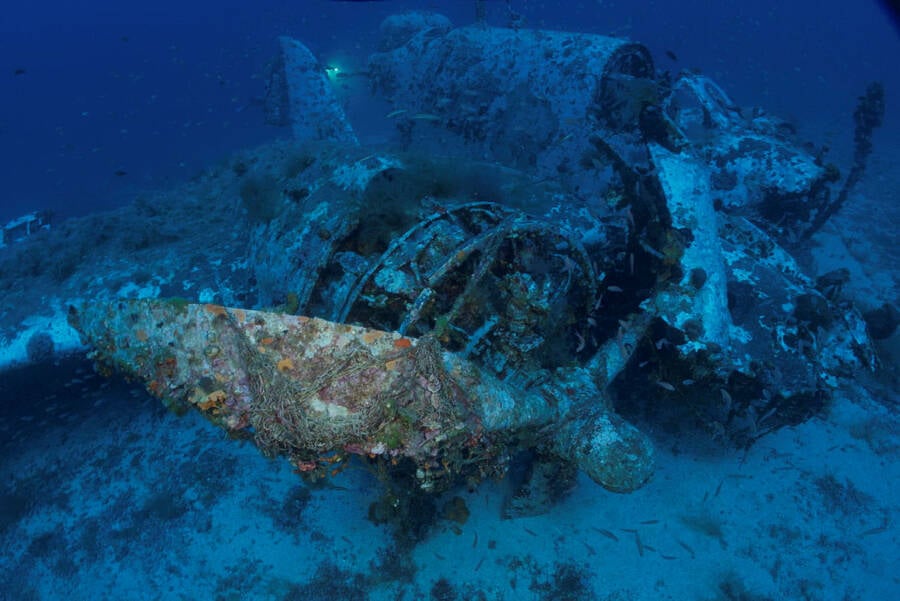
AegeanTec/Australian Department of DefenseA closer look at the Baltimore FW282, which was shot down in December 1943.
Indeed, it finally brings resolution to the story of the Baltimore FW282.
How The Baltimore FW282 Sank Into The Aegean Sea In December 1943
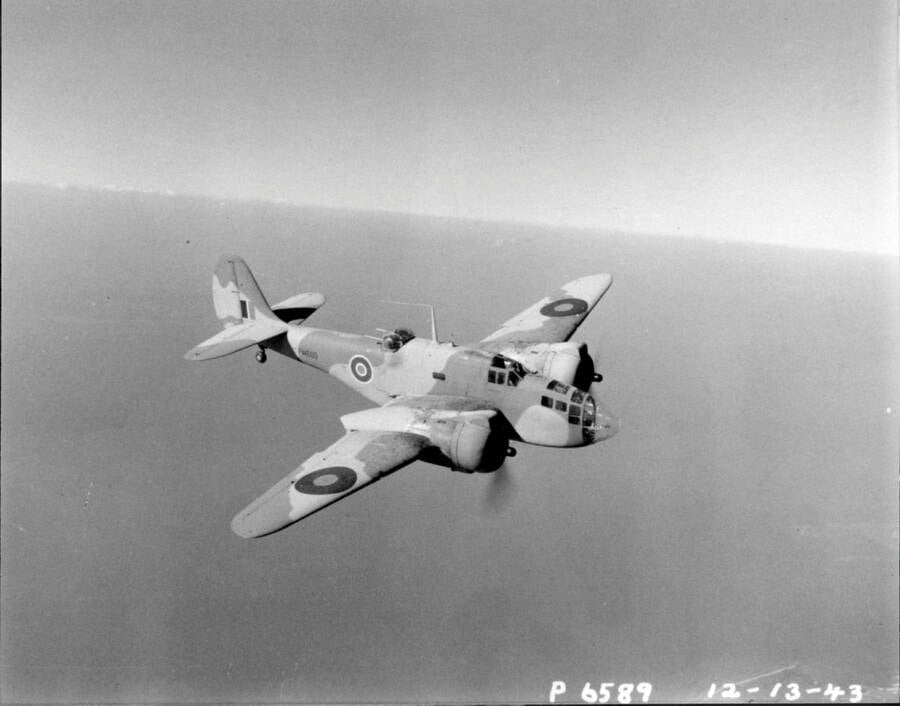
Martin Marietta Co/Australian Department of DefenseA Baltimore bomber aircraft, similar to the one that was shot down in 1943.
On December 3, 1943, the Baltimore FW282 was returning from a mission over the Aegean Sea when it was intercepted by a German fighter aircraft. During the subsequent air battle, the Baltimore FW282 sustained heavy damage, forcing Horsley to ditch the plane into the water below.
As the plane went down, Horsley was knocked unconscious. He awoke to find the cockpit filling with water, but was somehow able to extract himself from the plane and swim to the surface. On shore, Horsley was captured by Nazi troops, and spent the remainder of the war as a P.O.W.
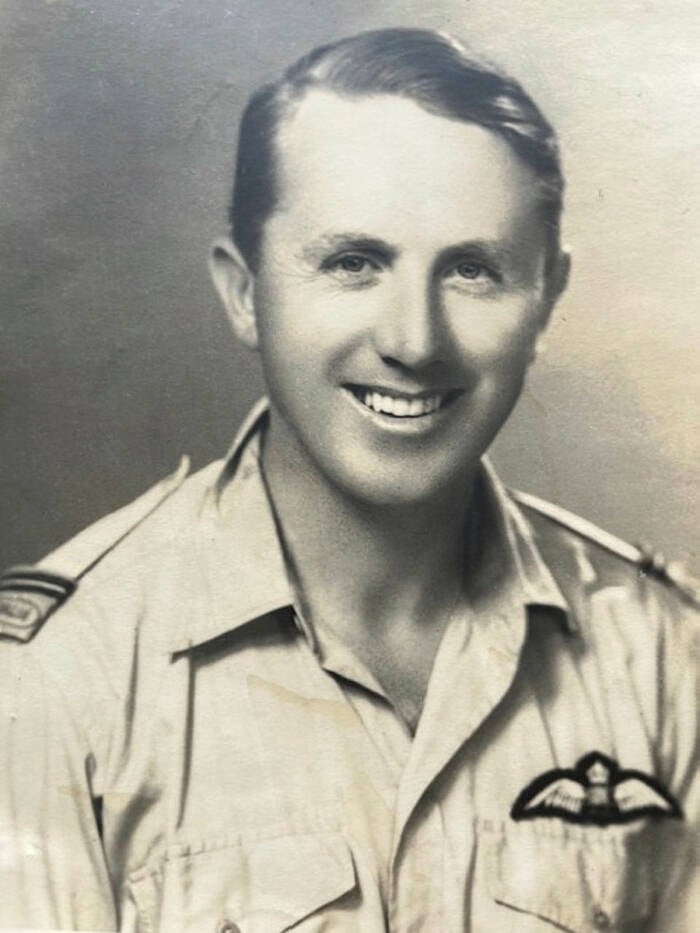
P Horsley/Australian Department of DefenseOf the four men aboard the Baltimore bomber, only pilot William Alroy Hugh Horsley survived.
Row, Walker, and Gartside were listed as missing, believed killed. But their exact resting place remained unknown until now.
RAAF officials hope that the discovery of the downed plane will bring a measure of closure to the families of Row, Walker, and Gartside.
“The sacrifice of this brave crew has long been remembered, especially by their families, and we can now honour their final resting-place with the respect they deserve,” said Chief of Air Force, Air Vice-Marshal Darryn Webb of the Royal New Zealand Air Force.
Though eight decades have passed since World War II, it’s not the first time in recent memory that the wrecks of downed planes from that era have been recovered. In 2024, volunteers with metal detectors were able to locate the plane of American John Fisher, whose plane went down during a secret mission in 1944. In recent years, archaeologists were also able to recover the downed plane of American Robert T. McCollum off the coast of Denmark.
“This was a generation who embodied the importance of service and comradeship. Their efforts were the base on which the RAF continues to maintain the security of the UK at home and abroad,” Chief of the Air Staff, Air Chief Marshal Sir Richard Knighton of the RAF stated. “Their sense of duty inspires future generations of all of our Air Forces.”
After reading about the recovery of a World War II airplane off the coast of Greece, go inside the harrowing story of the Blitz, Nazi Germany’s bombing campaign against London. Then, see how the Tuskegee Airmen tackled racism and became some of the most decorated pilots of World War II.





